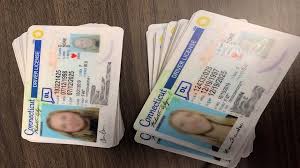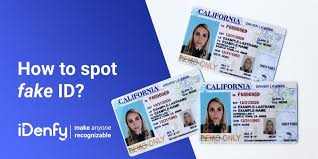fake ID market analysis
Table of Contents:
- Introduction
1.1 Overview of Fake ID Market
1.2 The Evolution of Fake IDs in the Digital Age - Product Features of Fake IDs
2.1 Types of Fake IDs
2.2 Technological Advancements in Fake ID Production
2.3 Key Characteristics of High-Quality Fake IDs - Market Analysis
3.1 Current Global Market Size and Growth
3.2 Factors Driving the Demand for Fake IDs
3.3 Major Regions of Fake ID Market Penetration - Target Audience for Fake IDs
4.1 Key Demographics
4.2 Motivations Behind Purchasing Fake IDs
4.3 Understanding Behavioral Trends of Consumers - Fake ID Vendors and Distribution Channels
5.1 Online and Dark Web Markets
5.2 Price Range and Customer Expectations
5.3 Vendor Marketing Tactics - Legal and Ethical Considerations
6.1 Legal Implications of Using Fake IDs
6.2 Efforts to Combat the Fake ID Market
6.3 How Fake IDs Challenge National Security - Technological Advancements in Detection
7.1 Fake ID Detection Methods
7.2 Future Technologies to Combat Counterfeit IDs - Risks and Challenges in the Fake ID Market
8.1 Consumer Risks
8.2 Vendor Risks - Future Outlook for the Fake ID Market
9.1 Trends Shaping the Market
9.2 Opportunities for Innovation - Conclusion
1. Introduction
1.1 Overview of Fake ID Market
The market for fake identification (ID) is a growing global industry fueled by technological advancements and a rising demand for illicit access to age-restricted services. From accessing nightlife and alcohol to bypassing immigration laws, the fake ID market serves a variety of consumer needs across numerous demographics. While it’s largely illegal, the business of counterfeit IDs thrives due to the allure of quick, unregulated solutions to bureaucratic hurdles.
This industry operates primarily through clandestine online channels and the dark web, and its products are becoming increasingly sophisticated, posing significant challenges to law enforcement agencies worldwide. The market encompasses a range of products, from simple, low-quality IDs to high-end replicas featuring holograms, UV-light reactions, and intricate security patterns.
1.2 The Evolution of Fake IDs in the Digital Age
The fake ID market has evolved considerably over time, particularly with the advent of advanced printing technology and high-quality scanners. What once involved rudimentary methods of producing false identification has transformed into a global marketplace where professional-grade IDs are manufactured and sold.
In the digital age, these IDs have become more sophisticated. Counterfeiters have harnessed the power of AI and blockchain to make their IDs more convincing and harder to detect. Online marketplaces, especially on the dark web, have allowed consumers to anonymously purchase counterfeit identification from the comfort of their homes.
2. Product Features of Fake IDs
2.1 Types of Fake IDs
Fake IDs can generally be classified into two categories:
Simple Fake IDs: Basic counterfeit IDs that mimic standard government-issued identification, typically used by minors attempting to access age-restricted activities. These tend to lack the more advanced security features found in real identification.
Advanced Fake IDs: These high-quality forgeries are often indistinguishable from the real thing, complete with holograms, barcodes, and other security features. They are designed to bypass advanced scanning systems and are sold at a premium price.
2.2 Technological Advancements in Fake ID Production
Modern counterfeiters leverage cutting-edge technologies to create fake IDs that appear legitimate to the untrained eye. High-resolution printers and graphic design software allow for the replication of intricate ID features, such as microprinting, holograms, and UV-reactive elements. Additionally, professional-grade card printers capable of encoding magnetic strips and RFID chips have brought fake ID production to new levels of sophistication.
2.3 Key Characteristics of High-Quality Fake IDs
High-quality fake IDs feature several key characteristics that make them difficult to detect:
- Holographic elements: Replicating state-specific holograms that change under different lighting conditions.
- Barcode and QR code encoding: Valid codes that, when scanned, mimic the data of a real identification.
- Raised text and microprinting: Small, intricate details that are often overlooked by manual checks but essential for authenticity.
- UV-sensitive inks: Ink that glows under UV light, mimicking the security features of real IDs.
These advanced features have made it harder for casual inspection and even some law enforcement tools to detect counterfeits.
3. Market Analysis
3.1 Current Global Market Size and Growth
The global market for fake IDs has grown significantly in recent years. With more than just underage consumers driving the demand, the market is estimated to be worth millions of dollars annually. The rise of e-commerce and anonymous payment methods, such as cryptocurrency, has facilitated the growth of this industry, allowing counterfeit ID vendors to reach a broader audience.
3.2 Factors Driving the Demand for Fake IDs
Several key factors have contributed to the increase in demand for fake IDs:
- Access to Age-Restricted Goods and Services: Minors seeking alcohol, cigarettes, and entry into nightclubs are among the largest consumer base for fake IDs.
- Immigration Evasion: In regions with strict immigration laws, counterfeit IDs are often used to bypass legal barriers.
- Identity Concealment: Some individuals use fake IDs to engage in activities anonymously, such as online purchases of regulated items or participation in illicit trades.
3.3 Major Regions of Fake ID Market Penetration
The market for fake IDs is particularly prominent in countries with strict age-based laws, such as the United States and parts of Europe. However, the demand for fake IDs spans globally, with significant growth in countries facing strict immigration enforcement, such as Australia, Canada, and the UK.
Emerging economies, where bureaucratic hurdles delay or complicate the process of obtaining legitimate identification, also contribute to the rising demand.
4. Target Audience for Fake IDs
4.1 Key Demographics
The primary users of fake IDs include:
- Minors and Young Adults: This demographic, particularly college students, constitutes the largest consumer base, using fake IDs primarily for underage drinking and entry into clubs or bars.
- Immigrants: In countries with stringent immigration policies, migrants may resort to fake IDs for employment, housing, or access to social services.
- Privacy-Conscious Individuals: Some individuals purchase fake IDs to maintain anonymity in transactions or online activities that they prefer not to be linked to their real identity.
4.2 Motivations Behind Purchasing Fake IDs
Understanding the motivations behind fake ID purchases is crucial for market analysis. For minors, it's largely about gaining access to adult privileges. For migrants, fake IDs represent a means to achieve stability in their lives despite legal restrictions. For others, such as hackers or individuals participating in illicit activities, fake IDs offer a layer of anonymity and protection from being tracked.
4.3 Understanding Behavioral Trends of Consumers
Consumer behavior trends show that the majority of fake ID buyers are willing to pay a premium for quality and reliability. Convenience, speed, and anonymity are critical factors influencing purchase decisions. With the rise of social media and online forums, younger consumers are increasingly using peer recommendations to find trusted vendors.
5. Fake ID Vendors and Distribution Channels
5.1 Online and Dark Web Markets
The sale of fake IDs has moved predominantly online, with vendors advertising their services on both surface web forums and the dark web. The dark web offers anonymity to both buyers and sellers, making it a preferred platform for illegal transactions.
5.2 Price Range and Customer Expectations
The cost of fake IDs varies significantly based on the quality of the product. Low-quality IDs can cost as little as $50, while high-quality replicas with embedded security features can cost upwards of $200 to $300. Customers expect their fake IDs to closely mimic authentic government-issued identification, with many vendors offering guarantees of successful verification through scanners.
5.3 Vendor Marketing Tactics
Vendors often rely on word-of-mouth recommendations and underground advertising on forums or social media platforms. They may offer package deals, loyalty discounts, or guarantees of quality to attract and retain customers. Cryptocurrencies like Bitcoin are frequently used for transactions, adding another layer of anonymity.
6. Legal and Ethical Considerations
6.1 Legal Implications of Using Fake IDs
Using a fake ID is a criminal offense in many countries, and consequences can range from fines to imprisonment, depending on the jurisdiction and the severity of the crime. The risks for those purchasing and using fake IDs are significant, especially if they are caught using the ID for illegal purposes such as committing fraud.
6.2 Efforts to Combat the Fake ID Market
Governments and law enforcement agencies have ramped up their efforts to shut down fake ID markets. From international cooperation to track down vendors to developing more sophisticated ID verification technologies, the fight against counterfeit identification has intensified in recent years.
6.3 How Fake IDs Challenge National Security
In some cases, fake IDs are used for more than just underage drinking—they can be employed in activities that pose serious national security threats. Terrorists, for example, have been known to use counterfeit identification to enter countries undetected. This heightens the urgency for effective ID detection and law enforcement collaboration.
7. Technological Advancements in Detection
7.1 Fake ID Detection Methods
As fake IDs become more sophisticated, so do the methods used to detect them. Technologies such as UV light scanners, magnetic strip readers, and databases that cross-reference personal information are becoming more commonplace in venues where IDs are checked.
7.2 Future Technologies to Combat Counterfeit IDs
The future of fake ID detection lies in biometric verification, blockchain technology, and AI-driven systems that can instantly detect anomalies in an ID’s features or the data encoded within it. These innovations will help to strengthen national security and prevent fraudulent access to restricted services.
8. Risks and Challenges in the Fake ID Market
8.1 Consumer Risks
Purchasing a fake ID comes with inherent risks, including legal repercussions if caught, as well as the possibility of receiving a low-quality product that could fail to pass basic inspection. Additionally, some vendors are outright scammers, taking customers' money without delivering the promised ID.
8.2 Vendor Risks
Vendors also face significant risks, including arrest, seizure of equipment, and hefty legal penalties. The move to digital platforms, while providing some anonymity, exposes vendors to risks from hacking, law enforcement stings, and online scams.
9. Future Outlook for the Fake ID Market
9.1 Trends Shaping the Market
Several trends will shape the future of the fake ID market, including the increasing use of sophisticated counterfeit techniques, the continued growth of online and dark web sales, and the rising demand for high-quality IDs in regions with strict age or immigration laws.
9.2 Opportunities for Innovation
For businesses involved in security and ID verification, there are numerous opportunities for innovation. The development of advanced detection technologies and collaboration between private enterprises and government bodies will be key to reducing the proliferation of fake IDs.
10. Conclusion
The fake ID market, while illegal, continues to thrive due to technological advancements and the persistent demand for counterfeit identification. As law enforcement agencies and governments work to combat this industry, vendors remain agile, adapting to new regulations and technologies to stay ahead. The battle between fake ID producers and regulators will continue to evolve, influenced by shifts in consumer behavior, legal frameworks, and the tools available to both sides.
 Replica ID Benefits
Replica ID Benefits
 fake ID market analysis
fake ID market analysis
 Novelty University ID
Novelty University ID
